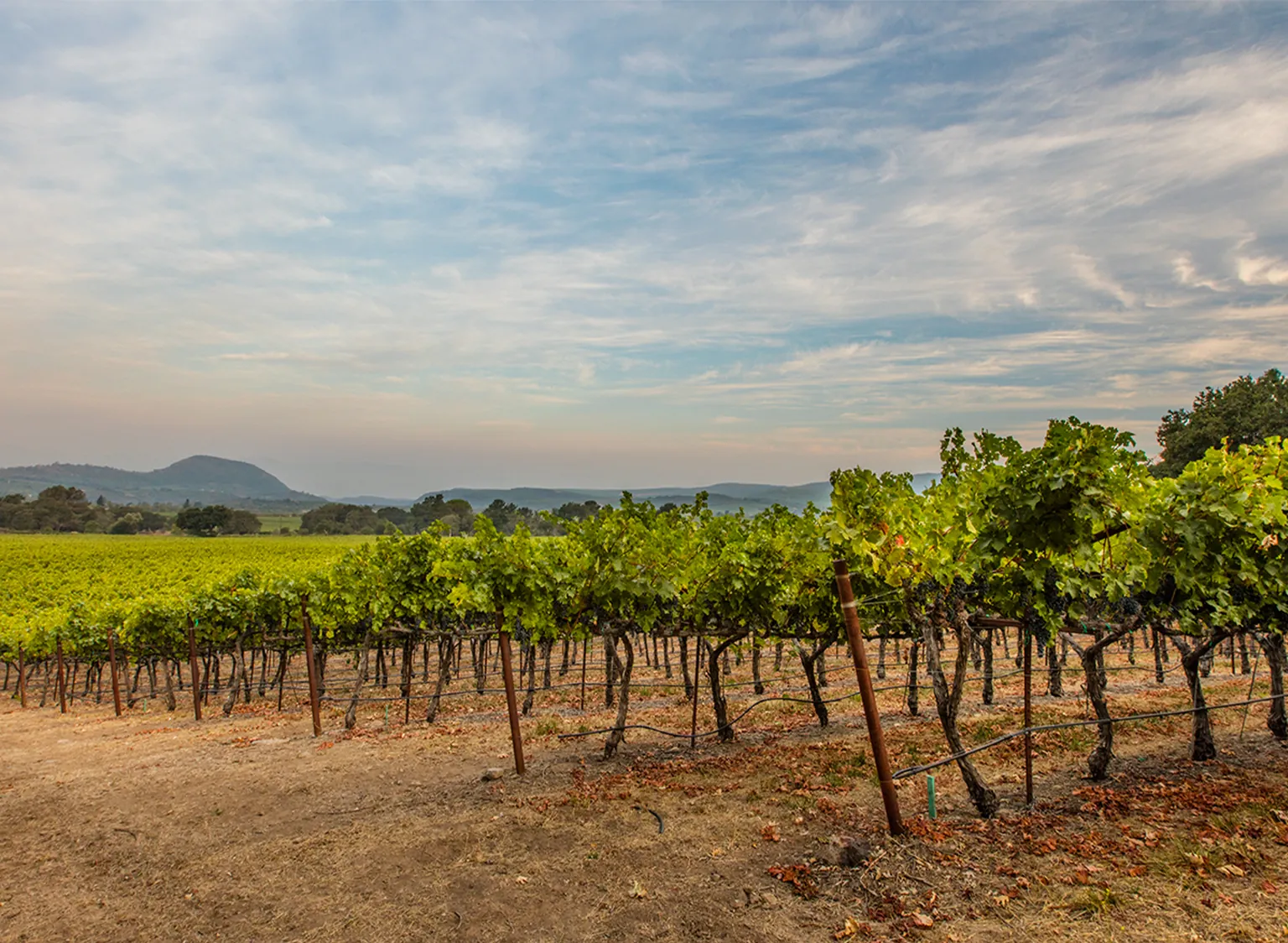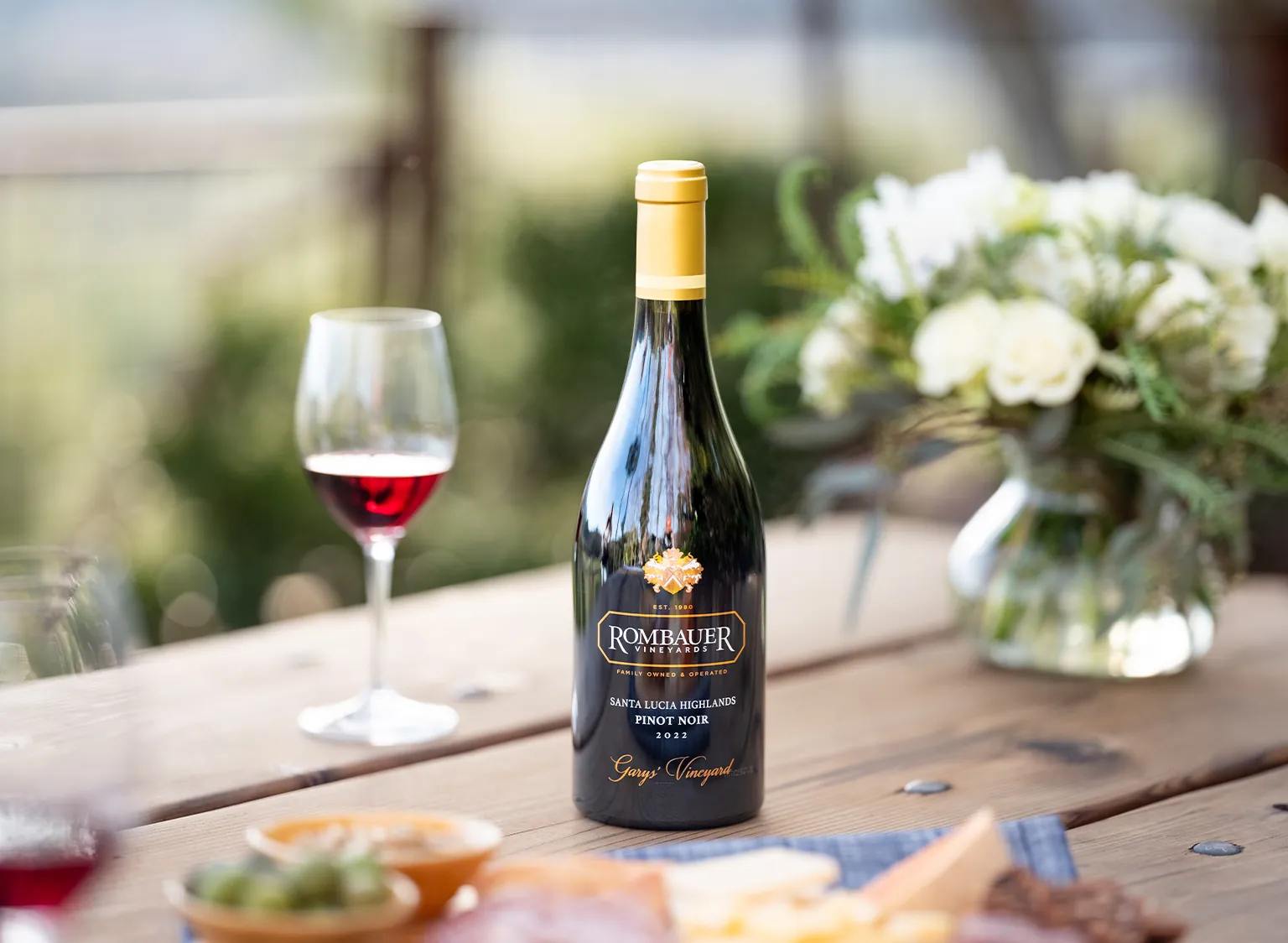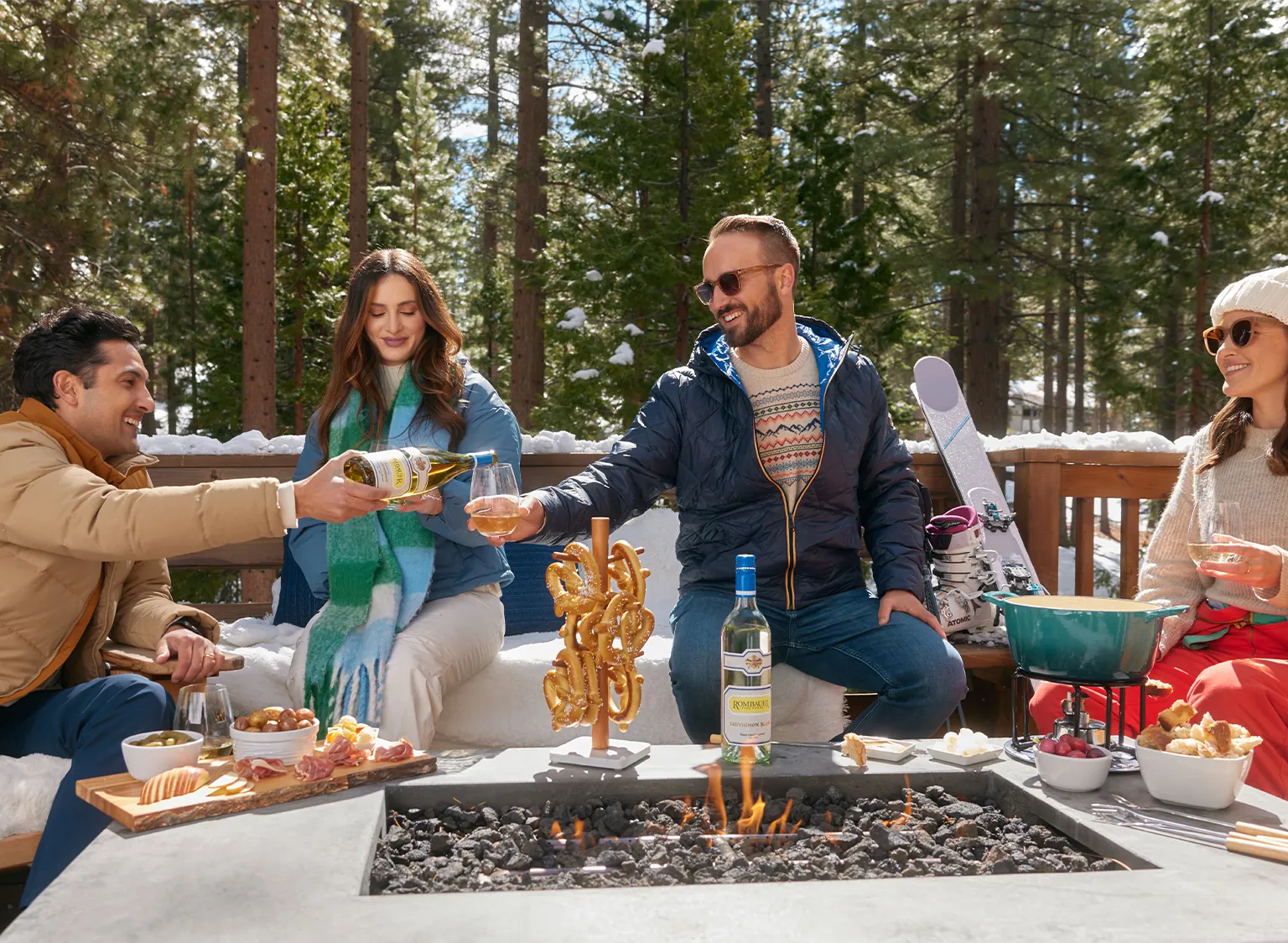Two decades after its founding, Rombauer Vineyards started doing well enough for Koerner to invest in our own vineyards. Owning and long-term leasing our fruit is one of our keys to maintaining and improving the quality of the fruit that goes into our wines.
Koerner wanted to make world-class Cabernet, some of the best produced in Napa Valley which aligned with the Rombauer style of wine. He had already invested in our Bennett Lane vineyard in Calistoga and Hackett in Stags’ Leap, both high-quality vineyards on the floor of Napa Valley. For his next investment, Koerner wanted mountain fruit, known to be intensely structured with bold tannins, to balance out the lushness of Cabernet from the valley floor.
He looked to Atlas Peak, home of the famous Stagecoach Vineyard. Koerner absolutely loved wines from that vineyard so when he decided that he wanted a premier Cabernet Vineyard of quality mountain fruit, he looked to Atlas Peak. He found a big vineyard owned by local acclaimed artist Alan Shepp who lived right behind the property.
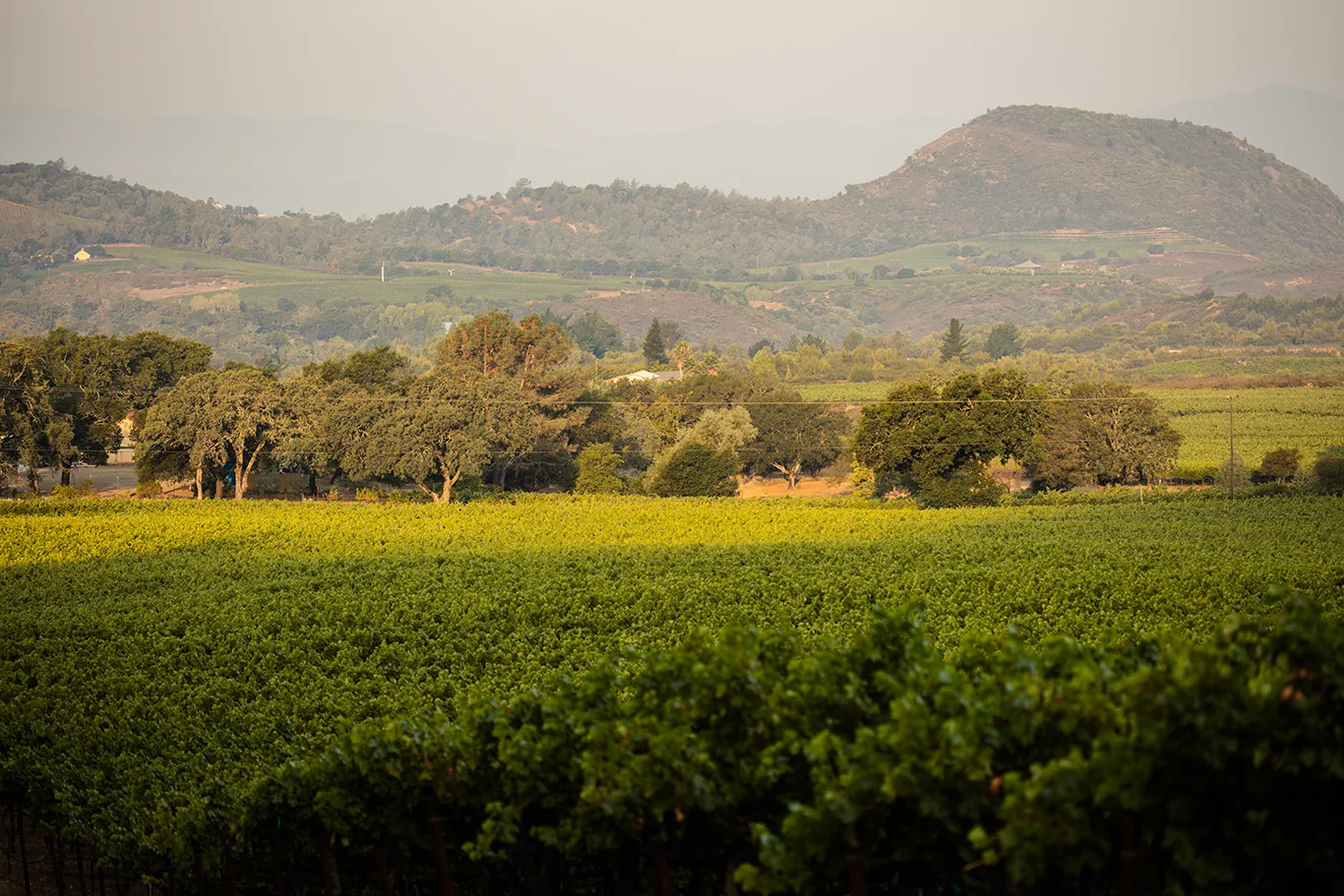
Our Atlas Peak vineyard sits above Stagecoach on the side of the sloped hillside of Atlas Peak. That mountain range, part of the Vaca range, which separates Napa from Central valleys, was formed by volcanoes, its soil now comprised of decayed volcanic ash. The vineyard itself sits at 1,600 feet above sea level and takes 40 minutes to reach once you turn off the Silverado Trail. Looking out, you see Yountville and the Mayacamas mountains behind it; beyond those sits Sonoma and the Pacific Ocean. The intense afternoon sun blazes down on the vineyard, but the elevation keeps it cooler than vineyards closer to the valley floor. As the sun sets, warm winds from the northern part of Napa Valley blow down south, keeping the temperatures warm even as the sun sets. These unique climatic conditions result in Cabernet berries which are very small and very concentrated.
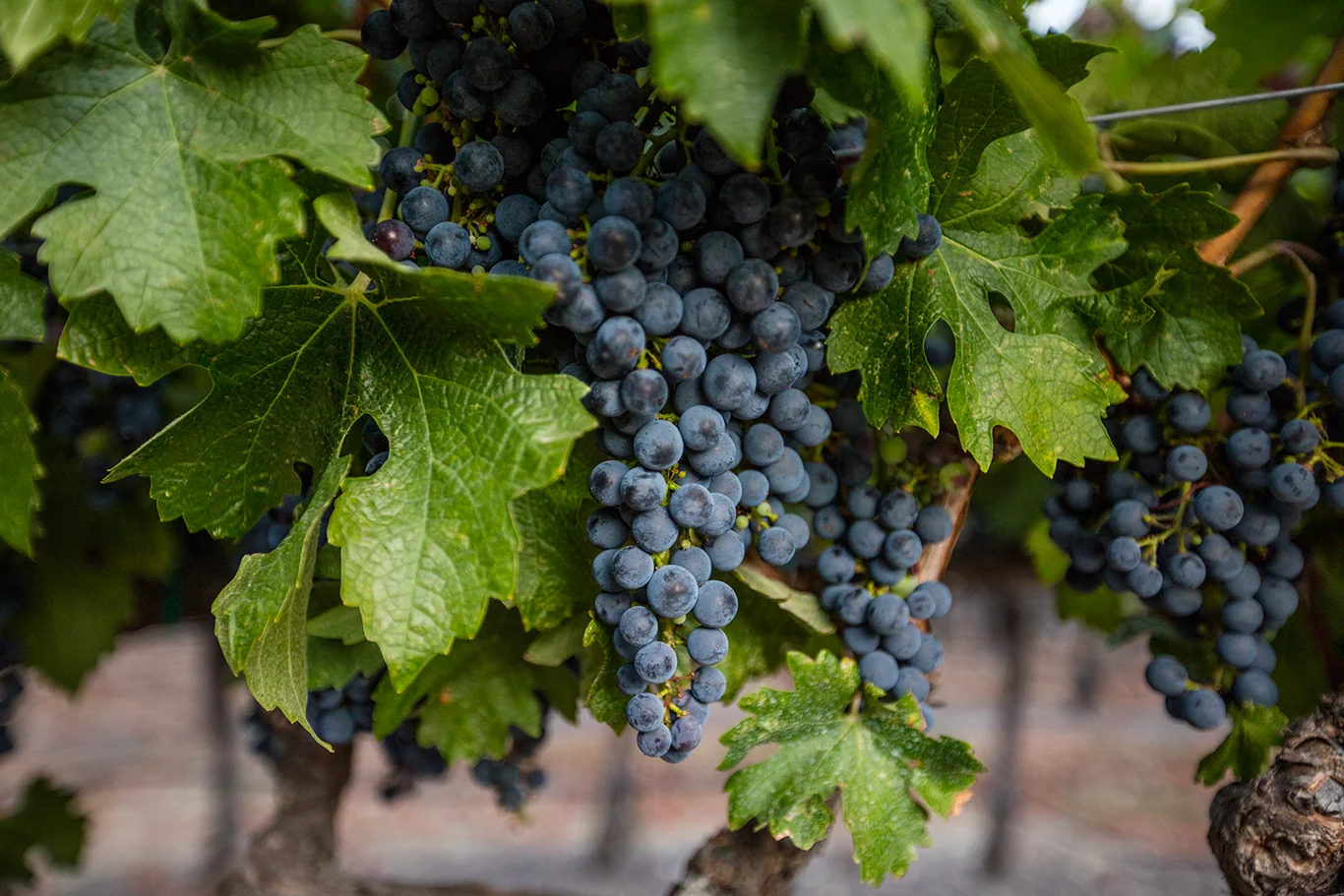
Given its aspect and topography, we monitor the water levels closely as that is one of the biggest challenges of this vineyard. While the vines appreciate a moderate level of stress, the intense sun and wind can dehydrate them too much so we use NDVI and water pressure bombs to make sure each vine is given the appropriate number of drops each needs.
The grapes are picked at night in waves, according to the optimal flavor development, sugar and phenolic ripeness levels. They are then trucked down the mountain and up to St. Helena where they are destemmed and optical sorted. Based on specifications input by our winemakers for color, size, fruit texture, and more, imperfect berries are removed and those who do meet the specs are then moved to barrel and tank for fermentation, depending on the needs of their respective lots. Post-fermentation, the Cabernet is aged in oak barrels until being racked and blended into the final wines.

While we bottle a single vineyard wine from Atlas Peak, its Cabernet Sauvignon is often blended into our Proprietor Selection Cabernet, our Le Meilleur du Chai, and our Napa Valley Cabernet in varying percentages depending on the vintage. The Cabernet is intense and bold, structured with grippy tannins, and has notes of blackberry, cranberry, and holiday spice.

